Arcturus, which is both bright and beautiful, is known as the guardian of the Big and Little Dipper!
This star, with its red or orange color, is believed to have originated from a distant galaxy that collided with the Milky Way during its journey! Arcturus is the brightest star in the Volopassus constellation and the fourth brightest star in the night sky.
Located approximately 36 light-years away from Earth, Arcturus is a yellow giant star. With an apparent magnitude of -0.05, it can just about be seen with the naked eye on a clear night. Although Arcturus was once considered the farthest object visible to the naked eye, several other stars have since broken that record. Nevertheless, Arcturus remains one of the most distant objects that can be observed without the use of optics.
This celestial body has been a part of numerous ancient myths and mythologies across the globe due to its conspicuousness. Arcturus holds significance in Sanskrit, Chinese astronomy, and indigenous Australian folklore, indicating its prolonged visibility. Its prominent visibility from Earth made it an invaluable aid for navigation during ancient times. Moreover, in ancient Mesopotamia, this star was revered as a deity and associated with the god Enlil.
One intriguing fact about Arcturus is the potential connection between its name and the name “Arthur.” Some historians speculate that not only has the name “Arthur” been in use since the time of Homer, but it may also have been inspired by the star itself, attributing even King Arthur’s name to this celestial entity!
What is the position of the star Arcturus in the night sky?
Arcturus can be found within the constellation of Volopassus.
Depending on your location, Arcturus is visible at different times of the year. In the Northern Hemisphere, it can be seen during the summer and fall months, while in the Southern Hemisphere it is visible in winter and spring. Interestingly, the appearance of Arcturus in the northern hemisphere is considered a sign of the impending arrival of spring. To locate this star, simply look 19 degrees north of the celestial equator. Despite not being the closest star to Earth, it is still quite prominent, unlike the star K1.5IIIFe-0.5, which is much more difficult to observe.
Being one of the most luminous celestial bodies in the nocturnal expanse, it’s not surprising that various cultures worldwide have created their own myths and legends surrounding it. This particular red giant star, known as Arcturus, is said to have originated from a different galaxy altogether. Its distinct trajectory, moving perpendicular to the Milky Way’s disk, serves as evidence that Arcturus, or Alpha Volopassus, was once part of a smaller galaxy that collided with our own. While the veracity of this claim has yet to be confirmed, what remains indisputable is that Arcturus shines brilliantly in the Northern Hemisphere!
What is the location of the star Arcturus?
The star Arcturus is situated within the constellation Volopassus. Volopassus is one of the 88 constellations that are recognized in the present era.
Being a part of such a significant constellation, the star is easily identifiable in the night sky if one knows where and how to look for it. Arcturus, the brightest orange giant star in the Volopassus constellation, can be found by tracing an imaginary arc from the handle of the Big Dipper.
Arcturus, a member of the Arcturus Stream, is one of the 52 stars that make up this group. Scientists believe that these stars, with their unique characteristics and movement patterns, are the leftovers of a dwarf galaxy that originated in the expansive galactic halo surrounding the Milky Way. It is important to note, however, that not all stars in the Arcturus stream are red giants. Additionally, there is a possibility that Arcturus has a companion star, which would make it a binary star system.
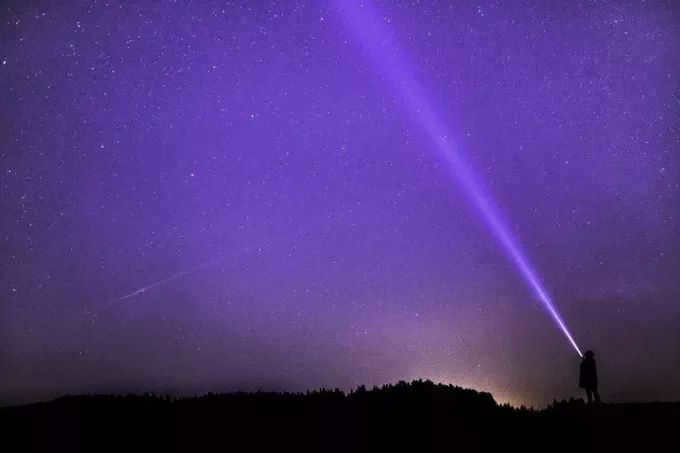
Characteristics of the star Arcturus
Due to its visual magnitude of -0.05, the star Arcturus appears brightest when observed north of the celestial equator. In contrast, Alpha Centauri, which receives light from its entire system, is not as easily visible to the naked eye.
Arcturus, at approximately 7.1 billion years old, is gradually expanding in size as it absorbs helium. It is also larger than our Sun, with a size that is 26 times greater. Additionally, Arcturus has a luminosity that exceeds the center point of our solar system by at least 100 times. Despite its distance of 36.7 light-years from the Sun, Arcturus remains remarkably bright and easily observable.
The future of this star appears to be quite grim. As the star consumes its helium, it will gradually shed its outer layers, eventually resulting in a powerful supernova explosion. This cataclysmic event will transform Arcturus into a compact white dwarf, likely surrounded by a planetary nebula!
The designation of this celestial body can be interpreted as “Protector Bear.” This is because the ancient Greeks believed that Arcturus served as the guardian of the Big and Little Bears. There is some validity to this notion, as Arcturus is indeed positioned in such a manner!
An intriguing fact about this particular star is its unique ability to be visible during the daytime, making it the only star, apart from the Sun, to possess this extraordinary characteristic. Furthermore, this star can even be observed at sunset. It is worth noting that the star attains its peak visibility around April 27 annually!
Distance between Earth and the star Arcturus
Due to its current movement away from Earth, the star Arcturus will not be visible to us for the next million years. At present, Arcturus is located approximately 36.7 light-years away from the Sun and around 36.6 light-years away from our planet.
Arcturus has a radius of approximately 11 million miles (18 million kilometers) and a mass that is 1.1 times greater than that of the Sun. It is worth mentioning that the brightest star in the constellation Volopassus has a lower temperature than the Sun, with a difference of only 73% compared to the Sun’s temperature. This makes the two stars quite distinct from each other!
Scientists predict that Arcturus will come closer to the Sun in about 4,000 years! Although we won’t be around to witness it, our future generations may have the opportunity to witness this spectacular event!
© 2022 Kidadle LLC. All rights reserved.
Arcturus, known as the protector of the Big and Little Dipper, shines with both brilliance and beauty!
This star, with its striking red or orange hue, is thought to have originated in a far-off galaxy that collided with the Milky Way at some point in its journey! Arcturus holds the distinction of being the brightest star in the Volopassus constellation and the fourth brightest star in the entire night sky.
Situated approximately 36 light-years away from our planet, Arcturus is a grand yellow star. With an apparent magnitude of -0.05, it is just barely visible to the naked eye on a clear evening. While Arcturus was once considered the most distant object observable without the aid of a telescope, that title has since been claimed by several other stars. Nevertheless, Arcturus remains one of the most distant objects that can still be seen without the use of optical instruments.
This celestial body has been a significant element of numerous ancient legends and mythologies worldwide due to its prominent visibility. Arcturus holds significance in Sanskrit, Chinese astronomy, and the folklore of the indigenous peoples of Australia, signifying its enduring prominence. Its conspicuousness from Earth has historically aided in navigation, particularly during ancient times. Remarkably, Arcturus was even revered as a divinity in ancient Mesopotamia and closely associated with the god Enlil.
An intriguing notion surrounding this star is the possibility that the name “Arthur” may have originated from “Arcturus.” Some historians even propose that not only has the name been prevalent since the time of Homer, but even the legendary King Arthur himself was named in homage to this celestial entity!
Volopassus is the constellation where you can find Arcturus.
Arcturus is observable in the summer and autumn months in the Northern Hemisphere. In the Southern Hemisphere, you can spot Arcturus during the winter and spring. Interestingly, the presence of this star in the northern hemisphere is also a sign of the upcoming spring season! To locate this star, you can look for it 19 degrees north of the celestial equator. Even though it is not the nearest star to Earth, it is still visible, just like the star K1.5IIIFe-0.5.
With its status as one of the most brilliant celestial objects in the nighttime sky, it’s no surprise that various cultures across the globe possess their own fascinating myths and legends surrounding it. This specific red giant star, known as Arcturus, hails from the Volopassus constellation and is believed to have originated from a distant galaxy. The star’s distinct trajectory, moving perpendicular to the disk of the Milky Way, serves as evidence supporting the notion that Arcturus, or Alpha Volopassus, was once part of a separate dwarf galaxy that eventually collided with our own Milky Way. While the validity of this hypothesis remains unconfirmed, it is undeniable that Arcturus remains a prominent fixture among the brightest stars visible in the Northern Hemisphere!
What constellation contains the star Arcturus?
The star Arcturus is situated within the constellation Volopassus. Volopassus is one of the 88 constellations that are recognized in the modern world.
As a part of this notable constellation, Arcturus can be easily located in the sky if one knows where and how to search. To locate the red giant star Arcturus, one must trace an imaginary arc from the handle of the Big Dipper. Along this imaginary arc, the brightest orange giant star of Volopassus, named Arcturus, can be spotted.
Arcturus is included in the Arcturus Stream, a cluster consisting of 52 stars. It is believed that these stars are the remains of a dwarf galaxy that developed in the expansive galactic halo of the Milky Way, based on their intrinsic movement and characteristics. It is worth noting, however, that not all stars in the Arcturus stream are red giants. Additionally, it is possible that Arcturus has a companion star, which would make it appear as a binary star system.
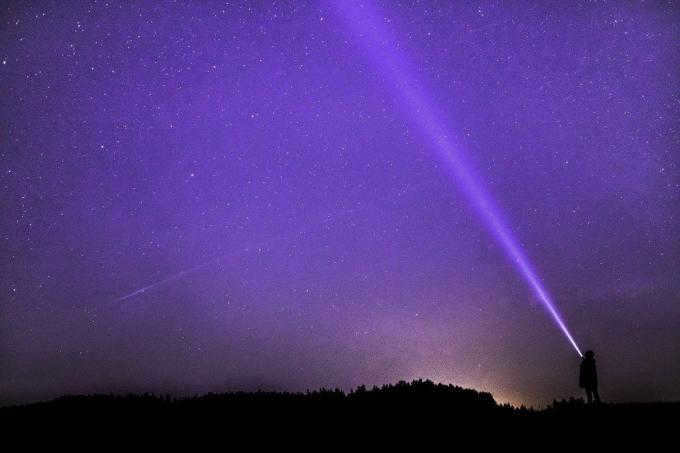
Characteristics of Arcturus
Arcturus, a star with a visual magnitude of -0.05, shines brightest in the northern hemisphere of the celestial equator. Unlike Alpha Centauri, which receives light from its entire system and is not easily visible to the naked eye.
Arcturus, which is approximately 7.1 billion years old, is gradually expanding as it absorbs helium. With a size 26 times larger than our Sun, Arcturus is significantly larger than the star in our solar system. Additionally, it has a luminosity that is at least 100 times greater than the center of our solar system. These factors contribute to the star’s remarkable brightness and high visibility, despite its distance of 36.7 light-years from the Sun.
The fate of this star is predicted to be rather grim. As the star’s helium is depleted, it will gradually shed its outer layers, eventually resulting in a supernova explosion. At that point, Arcturus will transform into a white dwarf and is likely to be surrounded by a planetary nebula!
The term given to this star can be interpreted as “Guardian Bear.” This is due to the fact that ancient Greeks believed this star to be the protector of the Big Dipper and Little Dipper constellations. There is some validity to this notion, as Arcturus is positioned in such a way!
One of the most fascinating aspects of this star is that it is the only star, aside from the Sun, that can be observed during the daytime. Furthermore, it can even be seen right after sunset. When attempting to locate this star, it is important to note that it reaches its highest point each year on April 27!
Distance of the star Arcturus from Earth
Due to its movement away from us, Arcturus will not be visible to Earth’s inhabitants for the next million years. At present, Arcturus is located approximately 36.7 light-years away from the Sun and about 36.6 light-years away from our planet.
With a radius of about 11 million miles (18 million kilometers) and a mass 1.1 times that of the Sun, the star Arcturus is quite fascinating. It is worth mentioning that the brightest star in the Volopassus constellation is actually cooler than the Sun, with a temperature that is only 73% lower! As a result, these two stars are significantly different.
Scientists predict that Arcturus will come closer to the Sun in approximately 4,000 years. Although we won’t be around to witness it, future generations may have the opportunity to behold this spectacular sight!
Written by.
Shirin is employed as a writer at Kidadl. She previously held positions as an English teacher and editor at Quizzy. During her time at Big Books Publishing, she was responsible for editing educational books aimed at children. Shirin has a degree in English from Amity University, Noida, and has received awards for her public speaking, acting, and writing skills.
Arcturus, located in the northern hemisphere of the Earth’s sky, is a red giant star and the brightest star in the Volopassus constellation. It is also one of the most prominent stars visible from our planet. Arcturus sits approximately 37 light-years away from Earth and ranks as the fourth brightest star in the night sky, boasting an apparent magnitude of -0.04 and an absolute magnitude of 0.2. With an estimated age of around 7.1 billion years, this star has stood the test of time.
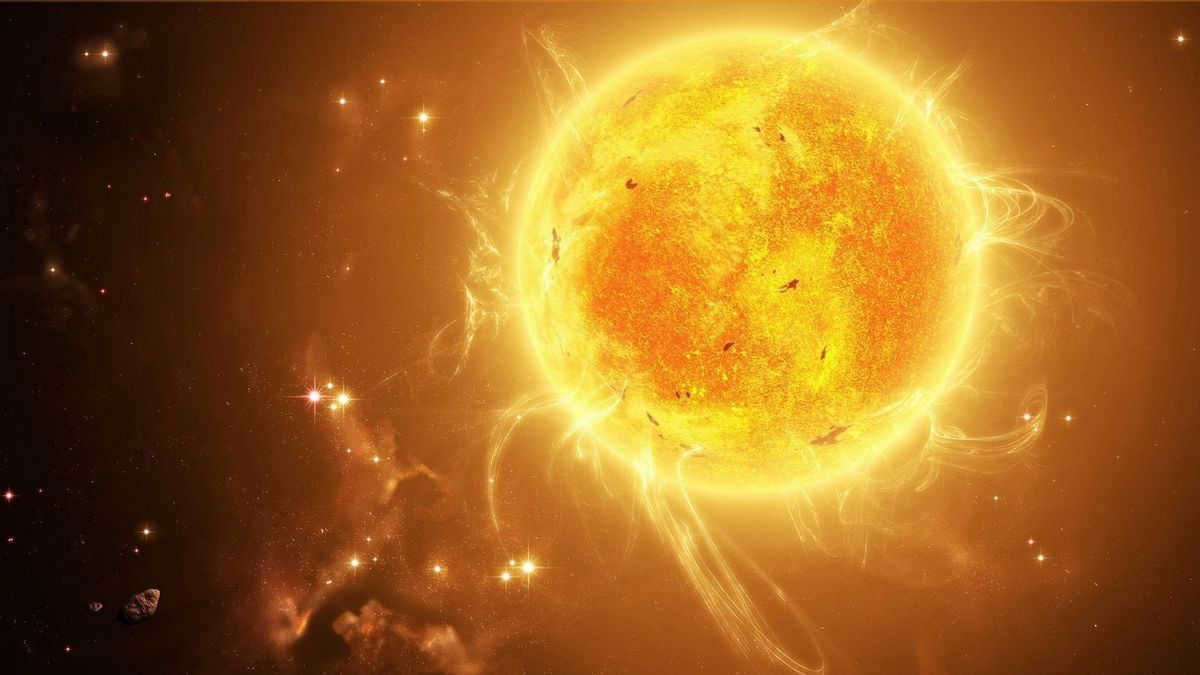
The star Arcturus got its name from the Greek word “Artcurus,” which means “keeper or guardian of the bear.” This name was given to it because of its position near the tail of the constellation Ursa Major, also known as the Big Dipper. According to astronomers, Arcturus will eventually transform into a white dwarf as it reaches the end of its life.
To find Arcturus, you can easily follow the curve of the handle of the Big Dipper. A helpful phrase to remember when locating this star is “Follow the arc to Arcturus, then rush to Spica.” The latter part of the phrase refers to another bright star called Spica, which is actually a double star.
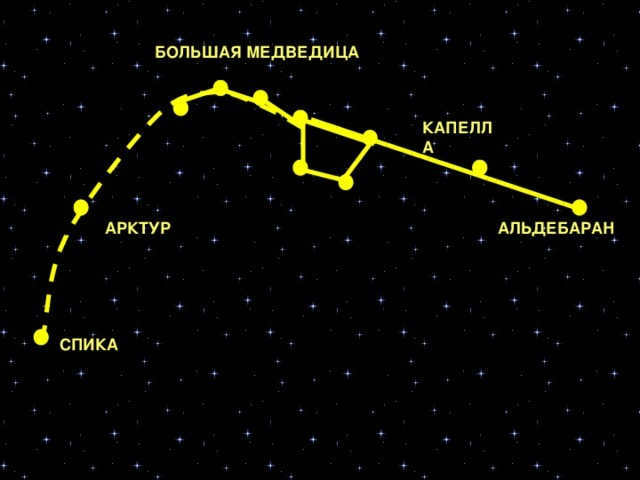
The main attraction of the Chicago Exposition
The organizers of the 1933 Chicago World’s Fair were searching for a remarkable way to inaugurate their exhibition. The city’s previous international fair had taken place four decades ago, in 1893. Given the prevailing belief at the time that Arcturus was approximately 40 light years away from Earth, event planners opted to incorporate the star’s radiance into the new Exposition, serving as a tribute to the past Chicago World’s Fair.

On May 27, 1933, at 9:15 p.m. Central Time, telescopes directed the light of the star onto multiple photocells. The electric current produced by the stellar photocells was utilized to activate spotlights in the exhibition area.
Subsequent measurements conducted years later provided a more precise calculation of the distance between Arcturus and Earth, which is determined to be 37 light years. Consequently, the spotlights employed at the Chicago World’s Fair actually commenced their journey towards Earth in 1896, rather than 1893.
Contemporary comprehension of Arcturus
Arcturus possesses a mass that is merely 1.5 times greater than that of the Sun. However, its radiance surpasses that of the Sun by a staggering 113 times. This extraordinary phenomenon is attributed to the fact that the star is currently in the final phases of its existence. Regarded as a red giant, Arcturus has ceased the process of hydrogen fusion within its core. It is widely believed by astronomers that the star has now progressed to the phase of synthesizing heavier elements such as carbon, nitrogen, and oxygen.

That’s the reason why Arcturus has a lower temperature compared to the Sun. The majority of the red giant’s energy is released as thermal energy. In reality, the star gives off 215 times more thermal energy than the Sun. Once Arcturus exhausts its helium supply, it’s likely that its outer layers will disperse, leaving behind a white dwarf, which is the star’s dense core.
Arcturus in science fiction
No planets have been discovered around Arcturus. However, the concept of planets orbiting Arcturus has been explored in various works of science fiction. One notable example is David Lindsay’s novel Journey to Arcturus (Methuen & Co. Ltd., 1920), where the main character embarks on a journey to Tormance, a fictional planet that orbits Arcturus.
Arcturus, whether portrayed as a star or a fictional planet, has made appearances in numerous science fiction franchises, such as Isaac Asimov’s Foundation series, the popular television series Doctor Who and Star Trek, and the movie Aliens. In Douglas Adams’ iconic work “The Hitchhiker’s Guide to the Galaxy,” there is a famous quote that goes: “No matter how fast the body moves, the soul travels at the speed of an Arcturan mega camel.”
It’s worth mentioning that we recently created a quiz to test your knowledge about the Sun.
Ever since I was a child, I have had a keen interest in space-related topics. Over time, this hobby of mine developed into a profession. I have curated scientific sections on various websites, including Bigmir)net, Segodnya.ua, Podrobnosti.ua, and now, I am proud to be a part of The Universe. Space. Tech. It is here that I have found a community of like-minded individuals and an enthusiastic audience eager to explore the wonders of the Universe with us. I take great pleasure in simplifying complex information and presenting it in a language that is accessible to all, in a popular science format.
Arcturus, situated in the constellation Volopassus, is undeniably the most brilliant star in the entire northern region of the sky. It shines brightly even from a distance of up to 40 light-years away from our Solar System. This majestic red-orange giant serves as one of the key points in the Spring Triangle, and it is also a part of the stunning asterism known as the Necklace (Diamond) of Virgo.

Etymology
The star’s name, Arcturus, originates from the Greek term meaning “Guardian of the Bear”. According to mythology, Arcturus is the offspring of Zeus and the nymph Callisto, who was transformed into the Big Dipper by the goddess Hera. In order to protect his mother from further harm caused by Hera, Arcturus was elevated to the heavens and turned into a radiant celestial body. The name was first documented in writing in 750 BC in Hesiod’s poem “Works and Days”.
Arcturus is known by different names in various cultures:
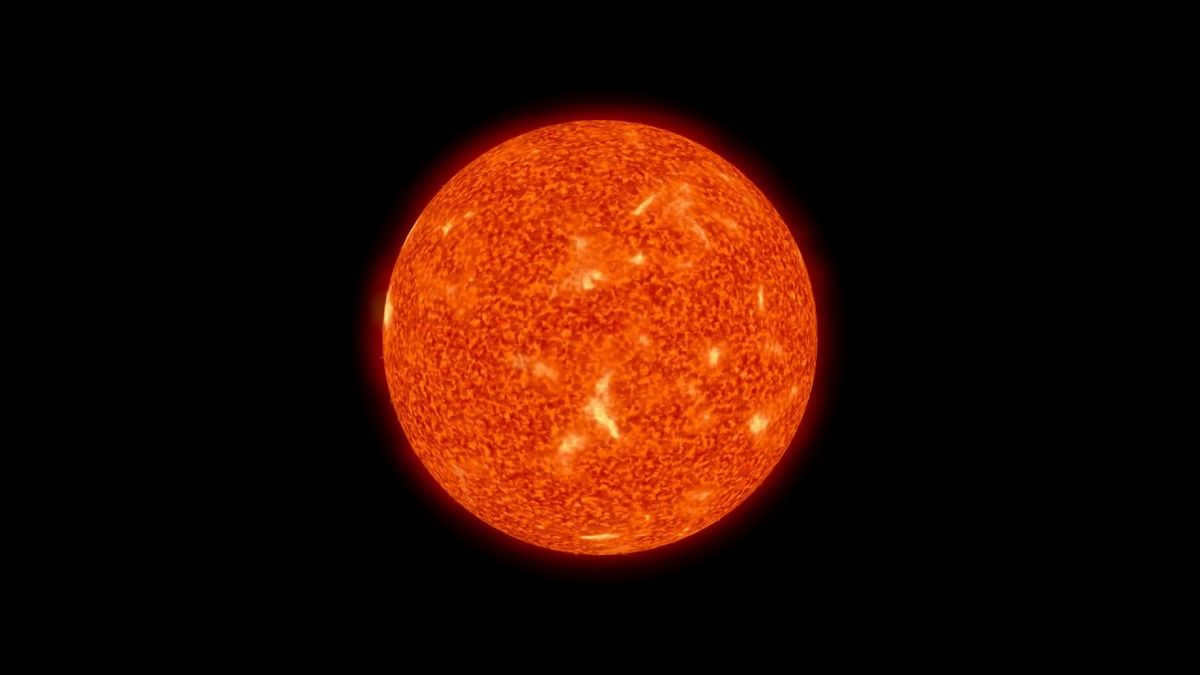
Arcturus: The Star’s Origins
With its low heavy metal content, Arcturus is considered an ancient star. It is believed to have originated in a different galaxy and later migrated to the Milky Way through its movement.
Arcturus is estimated to be around 7-8 billion years old, making it nearing the end of its lifespan. Its hydrogen reserves in the core have depleted, and the star is now consuming its outer layers. Eventually, it will transform into a white dwarf surrounded by a planetary nebula.
Physical attributes
In terms of physical characteristics, Arcturus differs from the Sun in the following ways:
- It has a mass that is 1-1.2 times larger than that of the Sun;
- It has a radius that is 25-27 times larger than that of the Sun;
- It has a luminosity that is 110 times brighter than that of the Sun.
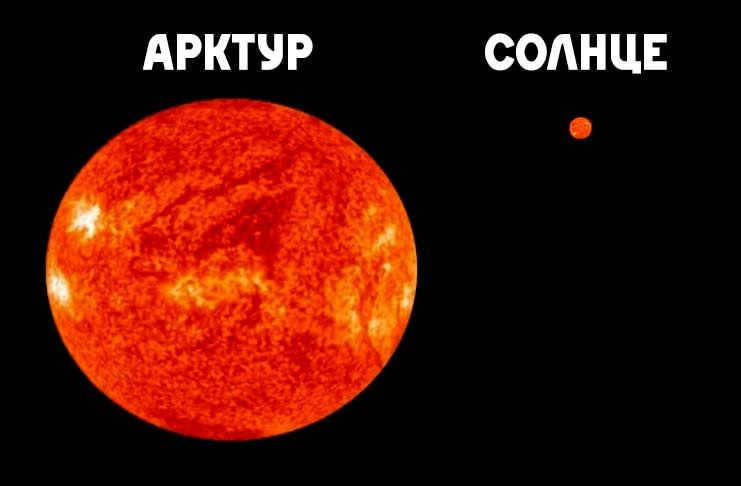
The star Arcturus emits infrared radiation that is 180 times stronger than the Sun. Additionally, the star has a lower heavy element content of only 17-32%. Despite being brighter than the Sun, Arcturus is actually colder with a temperature of only 4000-4300ºC, compared to the Sun’s temperature of 5726ºC. Arcturus belongs to the spectral class K1.5 III.
This particular star is known for its incredibly rapid movement. Studies of its coordinates have demonstrated that it traverses through space at an astonishing velocity of 122 km/s. Additionally, its trajectory does not align with the stellar disk, but instead cuts across it at a perpendicular angle.
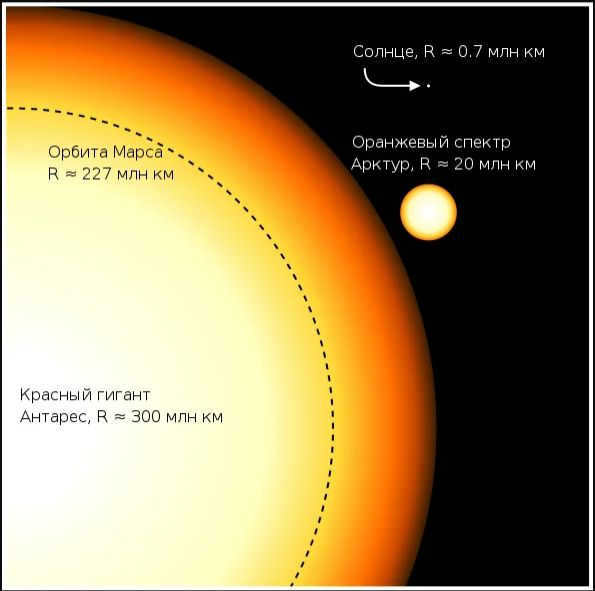
In approximately 4 thousand years, Arcturus is expected to approach the Sun at its closest distance. Subsequently, it will gradually move away in the opposite direction and after 1 million years, it will no longer be visible to the naked eye of an observer on Earth.
Arcturus drift
Arcturus, the celestial body, is not drifting through the vast expanse of space unaccompanied – it is accompanied by a retinue of 52 stars, giving rise to the fascinating phenomenon known as the Arcturus Drift. Researchers postulate that each of these constituent stars originated from outside our own Milky Way galaxy, adding to the intrigue of this celestial cluster. It is believed that this assemblage could be the remnants of a long-lost dwarf star formation that was dismantled and assimilated by our galaxy approximately 2 billion years ago.
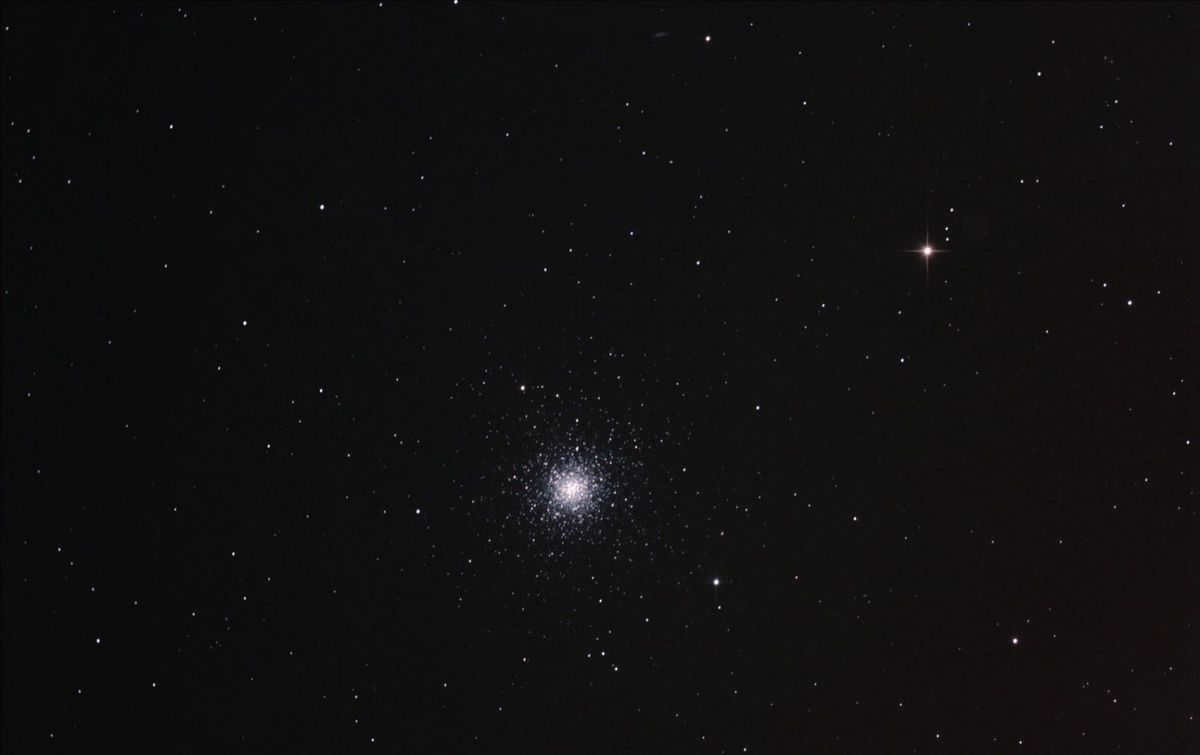
Observing the star Arcturus in the night sky
Arcturus, which is a star of significant magnitude, holds the distinction of being the fourth brightest star within our visible universe. Due to this distinction, it is possible to observe Arcturus with the naked eye from Earth during the nighttime. Even before the onset of darkness, this celestial object can be seen through a telescope. An intriguing fact about Arcturus is that it was the first star outside of our solar system to be observed during daylight hours with the assistance of astronomical technology. This groundbreaking observation occurred in 1635.
Positioned 19° north of the celestial equator, Arcturus can be seen from any location on Earth north of 71° south latitude, except for areas near the North Pole itself:
- Residents of the southern hemisphere have the opportunity to observe Arcturus in the northern region of the sky from late summer to early winter;
- For someone observing from North Africa, most of Asia, and Central America, the star will be positioned near its highest point in the sky;
- From the northern hemisphere of the planet, one can witness the star ascending from the northeastern horizon, reaching its peak in the southern sky, and eventually vanishing in the northwest.
Arcturus can be observed throughout the year from Russia, but it is particularly visible during the spring and until the end of July. During early autumn, it can be found low above the western horizon shortly after sunset, and in October-November – before dawn.
To easily locate the star in the sky, one can imagine drawing an arc that extends from the handle of the Big Dipper. Arcturus is the first prominent orange point along this arc.
If you extend this line further, at a distance roughly equivalent to the distance from the edge of the Big Dipper to Alpha Volopas, your eye will come across the brilliant blue star Spica, which is the brightest star in the Virgo constellation. Along with Arcturus, they form one side of the Spring Triangle asterism in the equatorial region of the sky. This asterism takes the shape of an equilateral triangle, with its third point being Denebola, situated approximately beneath the Big Dipper.
At times, this asterism is expanded to form a rhombus, including the star known as the Heart of Charles (alpha of the Hound Dogs), which shines directly opposite Spica. This shape is referred to as the Necklace (or Diamond) of Virgo.
Arcturus is also easy to locate if you are familiar with the position of the Volopassus constellation – the star can be found in its lower portion.
The sky is adorned with numerous stunning stars, and among them, one that stands out is Arcturus. This particular star possesses a multitude of remarkable qualities that can truly be appreciated by individuals who have a genuine interest in astronomy or are actively involved in this scientific field.
The Astonishing Attributes of Arcturus
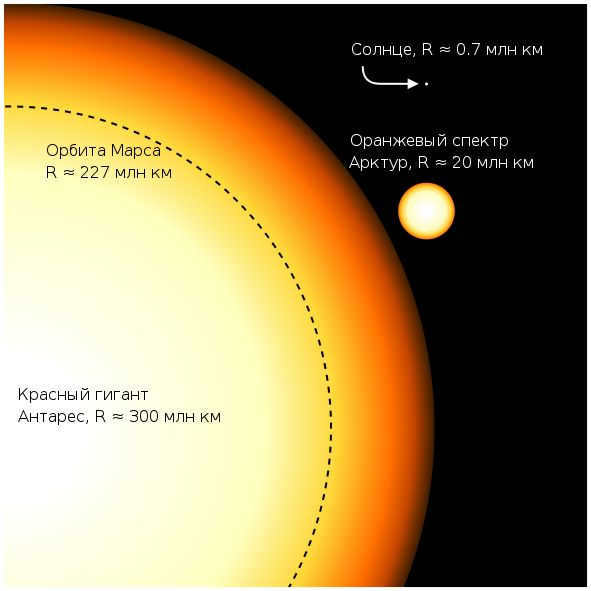
Comparing the sizes of Antares, Arcturus, the Sun, and the orbit of Mars
Arcturus, the brightest star in the northern hemisphere, holds the honorable fourth position in the list of the brightest stars in the night sky. When comparing the luminosity of Arcturus with that of the Sun, it shines 110 times brighter than our star. On a bolometric scale, considering the entire range of wavelengths and accounting for infrared radiation, Arcturus outshines the Sun by about 180 times, making its luminosity much more intense.
Speaking of the star’s physical characteristics, they are rather remarkable. Arcturus possesses a modest mass, roughly equivalent to that of our Sun, yet its size surpasses that of the Sun by a factor of 27. Such proportions signify the exceptional weightlessness of this celestial body, which stems from its minimal concentration of dense elements.
Arcturus’ motion across the sky
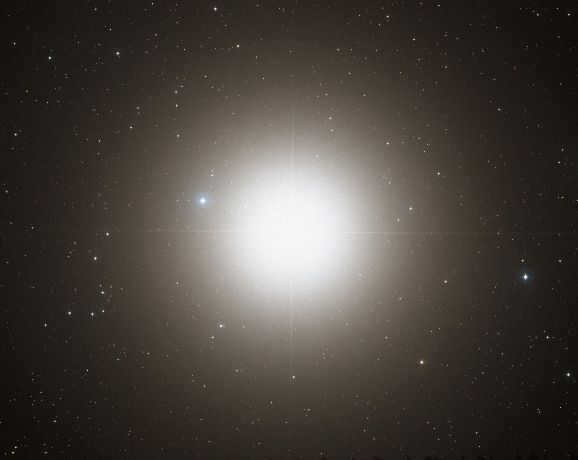
Optical image of Arcturus
First and foremost, let’s gain an understanding of the general concept of a star’s proper motion. In simple terms, the proper motion of a star refers to its ability to change its position in the night sky over time within the coordinate system of the cosmic sphere.
The proper motion of the star Arcturus in the celestial sphere’s coordinates is remarkably significant. Over a span of eight hundred years, Arcturus is capable of traversing an angular distance of 30′, which is quite substantial on a cosmic scale. It was in 1917 when the brilliant English mathematician and astronomer Edmond Halley first observed and identified Arcturus’ motion.
Arcturus stands out among the stars in the night sky with its remarkable velocity of motion (122 km/s), surpassed only by Alpha Centauri.
It is worth mentioning that Arcturus is not only the most well-known star, but also a member of the renowned Arcturus Stream, which consists of over fifty stars that share a collective motion.
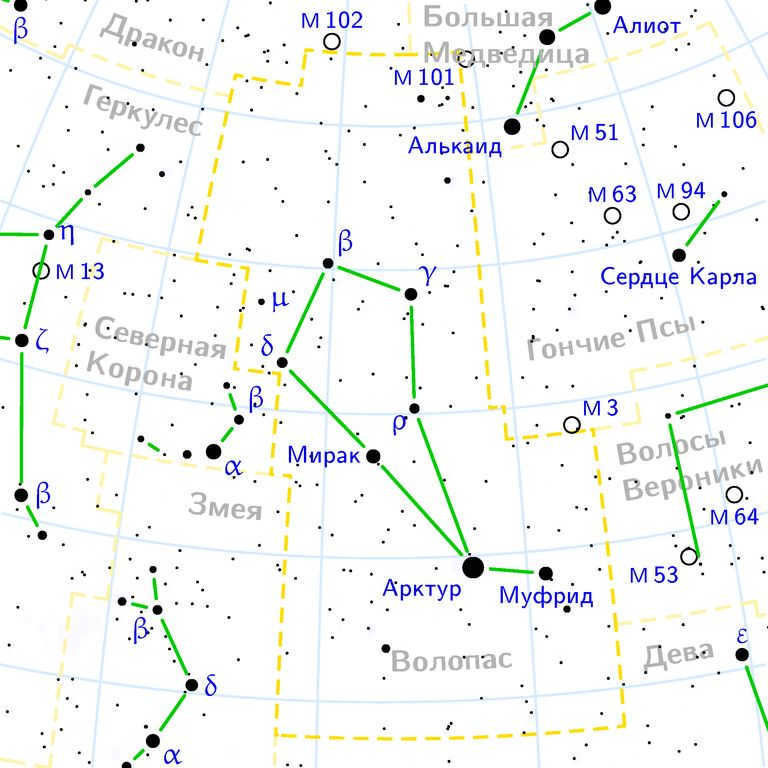
Scientists have discovered that the star Arcturus, the main star of the Volopassus constellation, is not moving independently on the celestial sphere. It is accompanied by a group of smaller stars, totaling more than 50. These stars have similar magnitudes and directions of motion, so scientists have named them the Arcturus Flow.
In addition to Arcturus, the Arcturus Flow includes other well-known stars such as Nu Virgo, Alpha Foxy, and 27 Cancer.
Researchers believe that these stars, including Arcturus, are not part of the Milky Way galaxy and have an extragalactic origin.
Arcturus: The Mystery of its Origins Unveiled
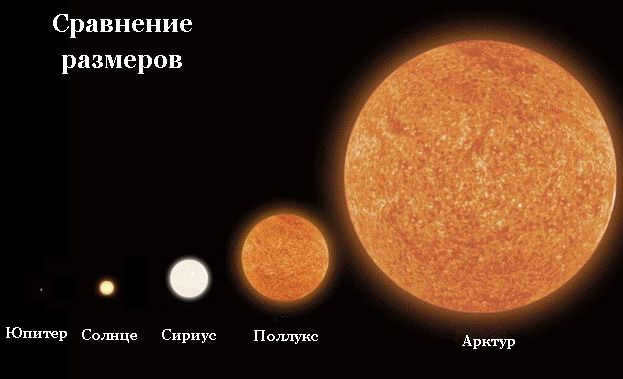
Recent research on the star Arcturus and examination of its luminosity spectrum suggest that this celestial object is classified as an ancient star with a relatively low concentration of heavy elements.
Related Resources
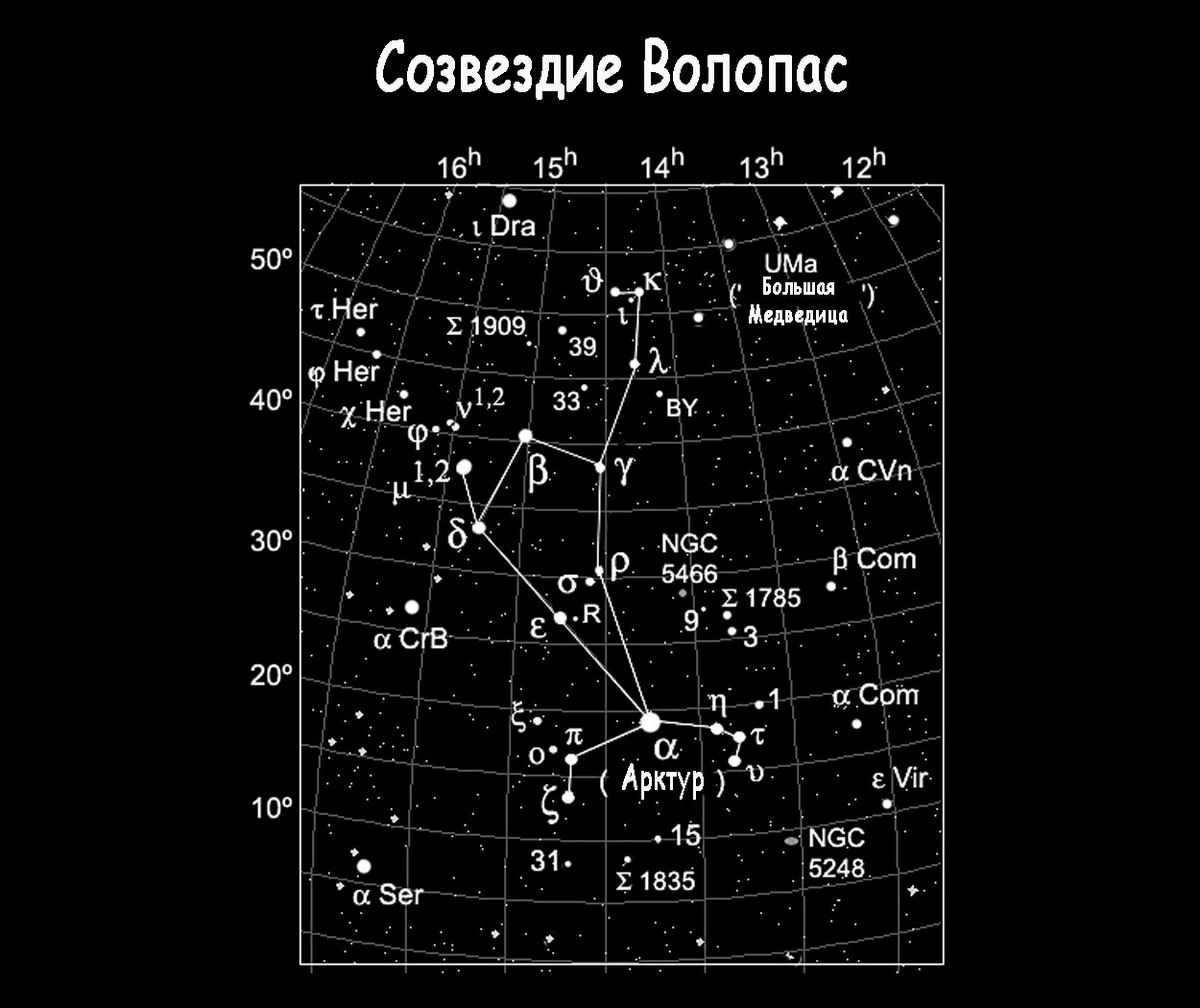
Typically, our galaxy, known as the Milky Way, lacks stars with comparable composition, leading to the notion that Arcturus originates from a different galaxy.
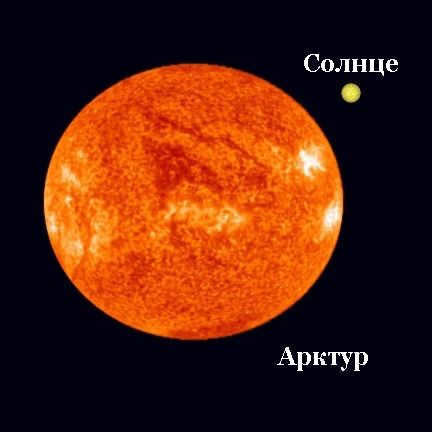
Comparing the size of Arcturus and the Sun
The star Arcturus is believed to have originated from outside our galaxy, as indicated by its type and age. Arcturus is classified as an orange giant of spectral class K and is estimated to be approximately 7.1 billion years old. These characteristics suggest that Arcturus belongs to population II stars, which are typically found in older galactic formations.
The high velocity at which Arcturus is moving through space has led scientists to believe that it was formed in a different galaxy that was later absorbed by the Milky Way. This theory is further supported by the presence of the Arcturus Stream, a group of stars that share a common trajectory on the celestial sphere.
Due to their movement, low metal content, and advanced age, cosmologists propose that these stars originated in a primordial dwarf galaxy.
Etymology


The constellation Volopassus, depicted in a drawing by Jan Hevelius
Similar to most celestial bodies in the nocturnal expanse, Arcturus possesses various designations: Alpha Volopasa, α Boo, Hokulea, Charis-as-sama, and others. Nonetheless, the customary appellation for this particular star is commonly acknowledged to be “Arcturus”. This title originates from the ancient Greek language and roughly translates to “Sentinel of the Ursa Major”.
Compilation of the most brilliant celestial bodies
| 0 | Sun | 0.0000158 | −26.72 | 4.8 | G2V | |
| 1 | Sirius (α Canis Majoris) | 8.6 | −1.46 | 1.4 | A1Vm | South |
| 2 | Canopus (α Carinae) | 310 | −0.72 | −5.53 | A9II | South |
| 3 | Alpha Centauri | 4.3 | −0.27 | 4.06 | G2V+K1V | South |
| 4 | Arcturus (α Boötis) | 34 | −0.04 | −0.3 | K1.5IIIp | North |
| 5 | Vega (α Lyrae) | 25 | 0.03 (permanent) | 0.6 | A0Va | North |
| 6 | Capella (α Aurigae) | 41 | 0.08 | −0.5 | G6III + G2III | North |
| 7 | Rigel (β Orionis) | ~870 | 0.12 (permanent) | −7 | B8Iae | South |
| 8 | Procyon (α Canis Minoris) | 11.4 | 0.38 | 2.6 | F5IV-V | North |
| 9 | Achernar (α Eridani) | 69 | 0.46 | −1.3 | B3Vnp | South |
| 10 | Betelgeuse (α Orionis) | ~530 | 0.5 (permanent) | −5.14 | M2Iab | North |
| 11 | Hadar (β Centauri) | ~400 | 0.61 (permanent) | −4.4 | B1III | South |
| 12 | Altair (α Aquilae) | 16 | 0.77 | 2.3 | A7Vn | North |
| 13 | Acrux (α Crucis) | ~330 | 0.79 | −4.6 | B0.5Iv + B1Vn | South |
| 14 | Aldebaran (α Tauri) | 60 | 0.85 (removable) | −0.3 | K5III | North |
| 15 | Antares (α Scorpii) | ~610 | 0.96 (permanent) | −5.2 | M1.5Iab | South |
| 16 | Spica (α Virginis) | 250 | 0.98 (permanent) | −3.2 | B1V | Southern |
| 17 | Pollux (β Geminorum) | 40 | 1.14 | 0.7 | K0IIIb | Northern |
| 18 | Fomalhaut (α Piscis Austrini) | 22 | 1.16 | 2.0 | A3Va | Southern |
| 19 | Mimosa (β Crucis) | ~290 | 1.25 (permanent) | −4.7 | B0.5III | Southern |
| 20 | Deneb (α Cygni) | ~1550 | 1.25 | −7.2 | A2Ia | Northern |
| 21 | Regulus (α Leonis) | 69 | 1.35 | −0.3 | B7Vn | Northern |
| 22 | Adhara (ε Canis Majoris) | ~400 | 1.50 | −4.8 | B2II | South |
| 23 | Castor (α Geminorum) | 49 | 1.57 | 0.5 | A1V + A2V | Northern |
| 24 | Hadar (γ Crucis) | 120 | 1.63 (permanent) | −1.2 | M3.5III | South |
| 25 | Shaula (λ Scorpii) | 330 | 1.63 (permanent) | −3.5 | B1.5IV | Southern |





